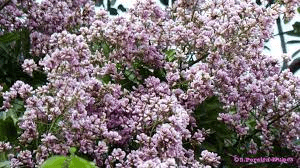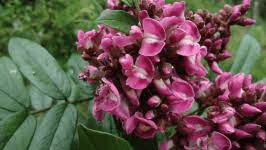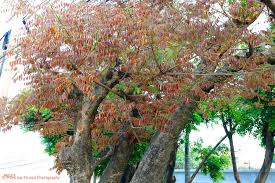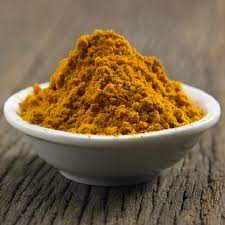Araroba powder, derived from the resin of the Andira araroba tree, holds a rich historical and cultural significance in traditional medicine and cosmetics. Native to the rainforests of Brazil, Andira araroba has been a valuable resource for various purposes, with its resin serving as the primary source for the production of araroba powder.
The powder is obtained by harvesting the resin from the bark of the Andira araroba tree, a process that involves careful extraction methods to ensure the preservation of its beneficial properties. Known for its natural antifungal properties, araroba powder has been traditionally used in the treatment of various skin conditions, such as fungal infections and dermatitis.
The powder’s efficacy in combating these ailments has made it a staple in traditional medicine practices, particularly in indigenous communities where the Andira araroba tree is abundantly found.
Apart from its medicinal applications, araroba powder has also made its mark in the cosmetic industry. Its natural antifungal and antimicrobial properties make it a sought-after ingredient in skincare products. It is often incorporated into creams, lotions, and ointments to address skin issues and promote overall skin health.
The historical use of araroba powder dates back centuries, with indigenous communities relying on the Andira araroba tree for its therapeutic benefits. Over time, the knowledge of its medicinal properties has transcended cultural boundaries, attracting attention and utilization in various regions around the world.
As interest in natural remedies and sustainable ingredients grows, araroba powder continues to be valued for its versatility and efficacy. Whether used in traditional medicine or modern cosmetics, Andira araroba and its powdered form showcase the harmonious intersection of nature and human well-being.
The Botanical Description of Araroba Powder
1. Plant Origin: Araroba powder is derived from the Andira araroba tree, a member of the Fabaceae family. This tree is native to the rainforests of Brazil and is known for its unique characteristics.
2. Tree Morphology: The Andira araroba tree is an evergreen that can reach heights of up to 20 meters. It has compound leaves with alternate leaflets, giving it a distinctive appearance. The tree produces small, fragrant flowers and leguminous fruits.
3. Bark and Wood: The bark of the Andira araroba tree is rough and brownish-gray. The wood is hard and durable, making it valuable for various purposes. The extraction of araroba powder typically involves parts of the tree, including the bark.
4. Leaf Structure: The compound leaves of the Andira araroba tree consist of several leaflets arranged in a pinnate pattern. These leaves play a crucial role in the synthesis of araroba powder, as certain compounds are concentrated in the plant’s foliage.
5. Growth Conditions: Araroba trees thrive in tropical climates with high humidity and rainfall. They are often found in dense rainforests, where they receive the necessary conditions for optimal growth.
6. Flower Characteristics: The small, fragrant flowers of the Andira araroba tree are typically white or cream-colored. These flowers play a role in the tree’s reproductive process, eventually leading to the formation of leguminous fruits.
7. Fruiting Pattern: The tree produces legumes that contain seeds. These legumes are a critical part of the araroba powder extraction process, as specific compounds are concentrated in the seeds.
8. Reproductive Cycle: Andira araroba follows a typical reproductive cycle for flowering plants. Understanding this cycle is essential for sustainable harvesting practices to ensure the preservation of the species.
9. Unique Features: Araroba trees are known for their resilience and adaptability. They have developed unique features to thrive in the competitive rainforest environment, contributing to their significance in various traditional practices.
10. Environmental Impact: The cultivation and extraction of araroba powder should be approached with environmental sustainability in mind. Understanding the tree’s botanical description aids in developing responsible harvesting practices.
11. Medicinal Uses: Beyond araroba powder’s commercial applications, the Andira araroba tree has a history of traditional medicinal uses among indigenous communities in Brazil. Exploring these applications enhances our understanding of the plant’s significance.
12. Conservation Status: Given the growing demand for araroba powder, monitoring the conservation status of the Andira araroba tree is crucial. Efforts should be made to prevent overharvesting and protect the natural habitats of these trees.
13. Ethnobotanical Significance: Araroba powder has not only botanical significance but also holds cultural and ethnobotanical importance. Understanding its role in local traditions enriches our appreciation for this unique plant.
The Geographic Distribution of Araroba Powder

1. Native Habitat: Araroba trees are primarily found in the rainforests of Brazil, especially in regions with tropical climates. The native habitat provides the necessary conditions for optimal growth and araroba powder production.
2. Brazilian Rainforest Regions: The Amazon Rainforest and other dense rainforest regions in Brazil are key areas where the Andira araroba tree thrives. These areas have a rich biodiversity, and araroba trees contribute to the ecosystem.
3. Altitude Preferences: Araroba trees typically grow at lower elevations within the rainforest, preferring altitudes below 500 meters. Understanding their altitude preferences is essential for identifying suitable regions for cultivation.
4. Soil Requirements: The Andira araroba tree prefers well-drained, fertile soils. It is often found in areas with a mix of clay and organic matter. Soil composition plays a crucial role in the distribution of araroba trees.
5. Climatic Conditions: Araroba trees thrive in tropical climates characterized by high temperatures and humidity. Consistent rainfall throughout the year is beneficial for their growth and the production of araroba powder.
6. Rainfall Patterns: Regions with an annual rainfall of 1,500 to 3,000 millimeters are ideal for araroba tree cultivation. Understanding the specific rainfall patterns is crucial for predicting the availability of araroba powder.
7. Biotic Interactions: The geographic distribution of araroba trees is influenced by interactions with other plant and animal species. These interactions contribute to the overall biodiversity of the rainforest ecosystem.
8. Human Cultivation: In addition to wild growth, there are efforts to cultivate araroba trees in specific regions. Human cultivation can expand the geographic distribution of araroba trees and ensure a sustainable supply of araroba powder.
9. Global Expansion: As the demand for araroba powder increases globally, there are attempts to introduce cultivation in other tropical regions with suitable climates. Understanding the potential expansion of araroba cultivation is vital for the industry.
10. Ecological Impact: The geographic distribution of araroba trees has ecological implications, affecting the balance of species within rainforest ecosystems. Sustainable practices are essential to minimize negative impacts on biodiversity.
11. Conservation Challenges: Protecting the geographic distribution of araroba trees faces challenges such as deforestation, habitat loss, and climate change. Conservation efforts should address these challenges to ensure the continued existence of araroba trees.
12. Research and Monitoring: Ongoing research and monitoring of araroba tree populations are necessary to understand changes in their geographic distribution. This information is crucial for conservation and sustainable management strategies.
The Chemical Composition of Araroba Powder
1. Araroba Resin: Araroba powder is primarily composed of a resin obtained from the Andira araroba tree. This resin contains various chemical compounds that contribute to the powder’s unique properties.
2. Triterpenoids: One significant group of compounds found in araroba powder is triterpenoids. These organic chemicals have diverse biological activities and are responsible for some of the medicinal properties associated with araroba.
3. Diterpenoids: Diterpenoids are another class of compounds present in araroba powder. These molecules contribute to the powder’s therapeutic effects and are of interest in pharmaceutical and cosmetic applications.
4. Flavonoids: Flavonoids are known for their antioxidant properties, and they are found in araroba powder. These compounds play a role in protecting the skin and may have potential applications in skincare products.
5. Antioxidant Compounds: Araroba powder contains various antioxidant compounds, including flavonoids and other polyphenols. These antioxidants contribute to the powder’s ability to neutralize free radicals and protect against oxidative stress.
6. Anti-Inflammatory Agents: Certain chemical components in araroba powder exhibit anti-inflammatory properties. These agents may have applications in skincare formulations and other products aimed at reducing inflammation.
7. Antimicrobial Compounds: Studies have identified antimicrobial compounds in araroba powder, suggesting its potential use in products designed to combat microbial growth. This makes araroba valuable in certain cosmetic and medicinal applications.
8. Biological Activities: The chemical composition of araroba powder imparts various biological activities, including antimicrobial, anti -inflammatory, and antioxidant effects. Understanding these activities is crucial for exploring potential therapeutic uses.
9. Lipophilic Compounds: Araroba powder contains lipophilic compounds that make it suitable for use in skincare formulations. These compounds contribute to the powder’s texture and its ability to be incorporated into cosmetic products.
10. Resin Extraction Process: The extraction process of araroba resin involves specific techniques to concentrate the desirable chemical compounds. This process influences the overall quality and efficacy of the resulting araroba powder.
11. Pharmacological Studies: Ongoing pharmacological studies are uncovering new insights into the chemical composition of araroba powder and its potential applications in medicine and skincare. These studies contribute to the evolving understanding of araroba’s benefits.
12. Formulation Considerations: Product formulations utilizing araroba powder need to take into account its chemical composition. Balancing the concentrations of different compounds is essential for achieving desired therapeutic effects.
13. Synergistic Effects: The interaction between the various chemical components in araroba powder can result in synergistic effects. Understanding these interactions is critical for optimizing formulations and maximizing the benefits of araroba.
14. Quality Control Measures: As araroba powder gains popularity in various industries, implementing quality control measures in the production process is essential. Ensuring consistency in the chemical composition guarantees the efficacy of the final product.
Read Also: 17 Medicinal Health Benefits Of Saffron (Crocus sativus)
The Medicinal Health Benefits Of Araroba Powder (Andira araroba)

1. Skin Conditions Relief: Araroba powder exhibits anti-inflammatory properties, providing relief for various skin conditions such as eczema, psoriasis, and dermatitis.
2. Wound Healing: The medicinal properties of araroba promote faster wound healing by reducing inflammation and supporting tissue regeneration.
3. Antimicrobial Action: Araroba powder’s antimicrobial compounds help combat bacterial and fungal infections, making it beneficial for skin-related microbial issues.
4. Acne Treatment: Its anti-inflammatory and antimicrobial properties make araroba powder effective in treating acne and preventing future breakouts.
5. Sunburn Relief: Araroba’s soothing properties make it useful in alleviating sunburns, reducing redness, and promoting skin recovery.
6. Anti-Aging Benefits: The antioxidants in araroba powder contribute to anti-aging effects by protecting the skin from oxidative stress and reducing the appearance of wrinkles.
7. Skin Brightening: Araroba powder can contribute to a brighter complexion by reducing dark spots and promoting even skin tone.
8. Eczema Management: Its anti-inflammatory nature makes araroba beneficial for managing the symptoms of eczema, providing relief from itching and redness.
9. Antioxidant Protection: Araroba’s antioxidant compounds help protect the skin from free radical damage, supporting overall skin health.
10. Hair and Scalp Health: Araroba powder can be used in hair treatments to promote a healthy scalp, reduce dandruff, and enhance hair quality.
11. Nail Care: Its antimicrobial properties make araroba powder useful for maintaining healthy nails and preventing fungal infections.
12. Anti-Inflammatory for Joints: Araroba’s anti-inflammatory effects extend to joint health, providing relief for conditions such as arthritis.
13. Respiratory Health Support: Araroba powder may be used to support respiratory health, helping to alleviate symptoms of respiratory conditions.
14. Digestive Aid: Araroba’s anti-inflammatory properties may contribute to digestive health by soothing the digestive tract.
15. Immune System Boost: The medicinal properties of araroba powder may support the immune system, enhancing the body’s ability to fight off infections.
16. Fever Reduction: Araroba’s traditional uses include fever reduction, making it a potential remedy for fever-related symptoms.
17. Anti-Anxiety Properties: Some compounds in araroba powder may have calming effects, contributing to its potential anti-anxiety properties.
18. Antioxidant-rich Beverage: Araroba powder can be incorporated into beverages for antioxidant benefits, promoting overall health.
The Methods of Usage to Achieve the Provided Health Benefits Of Araroba Powder (Andira araroba)
1. Topical Application: Create a paste by mixing araroba powder with water or a carrier oil for direct application on the skin to address various skin conditions.
2. Wound Dressing: Apply araroba powder directly to wounds or mix it with a healing salve for faster wound healing.
3. Skincare Products: Incorporate araroba powder into skincare products like creams, lotions, or serums for daily use.
4. Acne Spot Treatment: Prepare a spot treatment by mixing araroba powder with aloe vera gel and apply it directly to acne-prone areas.
5. Sunburn Remedy: Mix araroba powder with a cooling agent like aloe vera and apply it to sunburned areas for relief.
6. Anti-Aging Masks: Create anti-aging face masks by combining araroba powder with natural ingredients like honey or yogurt.
7. Brightening Serums: Formulate a brightening serum by adding araroba powder to a serum base for even skin tone.
8. Eczema Balms: Prepare balms or ointments with araroba powder and soothing oils for managing eczema symptoms.
9. Antioxidant-rich Smoothies: Incorporate a small amount of araroba powder into antioxidant-rich smoothies for overall health benefits.
10. Hair Masks: Combine araroba powder with natural oils and use it as a hair mask to promote scalp health and enhance hair quality.
11. Nail Soaks: Create a nail soak by mixing araroba powder with warm water to maintain healthy nails.
12. Joint Compress: Mix araroba powder with a carrier oil and apply as a compress to joints for anti-inflammatory effects.
13. Respiratory Steam: Inhale steam infused with araroba powder to support respiratory health and alleviate congestion.
The Side Effects Of Using Araroba Powder (Andira araroba) Medicinal Plant
1. Allergic Reactions: Individuals with allergies to plants in the Fabaceae family may experience allergic reactions to araroba powder.
2. Skin Irritation: Topical application may cause skin irritation in some individuals. Perform a patch test before widespread use.
3. Digestive Discomfort: Excessive consumption or internal use may lead to digestive discomfort such as nausea or upset stomach.
4. Photosensitivity: Some individuals may experience increased sensitivity to sunlight after using araroba powder topically.
5. Respiratory Irritation: Inhaling araroba powder may cause respiratory irritation in sensitive individuals.
6. Interactions with Medications: Consult with a healthcare professional before using araroba powder, especially if taking medications, to avoid potential interactions.
7. Not Suitable for Pregnant Women: Pregnant women should avoid using araroba powder internally due to its potential effects on pregnancy.
8. Not Recommended for Children: Usage in children should be monitored, and internal use is generally not recommended for young age groups.
9. Avoid Eye Contact: Take precautions to avoid contact with the eyes, as araroba powder may cause irritation.
10. Potential Photosensitizing Effects: Individuals with sun-sensitive skin should be cautious as araroba powder may increase sensitivity to sunlight.
11. Not for Long-Term Internal Use: Avoid prolonged internal use of araroba powder without proper medical supervision.
12. Consultation with a Healthcare Professional: Individuals with pre-existing medical conditions should seek advice from a healthcare professional before using araroba powder for medicinal purposes.
Read Also: List of Diseases Ruminant Animals (Livestock) Get from Feeds and Water
The Scientific Research and Studies of Araroba Powder (Andira araroba)

1. Antimicrobial Properties: Scientific research has delved into the antimicrobial properties of araroba powder, highlighting its effectiveness against a range of bacteria and fungi. Studies have explored its potential applications in both pharmaceutical and cosmetic formulations.
2. Anti-Inflammatory Effects: Research has investigated the anti-inflammatory effects of araroba powder, shedding light on its ability to reduce inflammation in various contexts. This has implications for conditions ranging from skin disorders to joint inflammation.
3. Wound Healing Potential: Scientific studies have explored the wound healing potential of araroba powder, elucidating the mechanisms through which it accelerates the healing process. This research contributes to its application in topical treatments.
4. Dermatological Applications: Studies have focused on the dermatological applications of araroba powder, emphasizing its role in treating skin conditions such as eczema, psoriasis, and acne. These findings provide insights into its efficacy for skincare.
5. Phytochemical Analysis: Researchers have conducted phytochemical analyses of araroba powder to identify and quantify its chemical constituents. This comprehensive analysis contributes to understanding its medicinal properties.
6. Toxicological Studies: To ensure safety, toxicological studies have been conducted to assess the potential adverse effects of araroba powder. Understanding its safety profile is crucial for its use in medicinal and cosmetic products.
7. Comparative Studies: Scientific research has included comparative studies evaluating the efficacy of araroba powder against existing treatments. Such comparisons provide valuable information for healthcare practitioners and product developers.
The Safety Precautions and Recommendations In Using Araroba Powder (Andira araroba) Medicinal Plant
1. Patch Test for Allergic Reactions: Before widespread use, perform a patch test to check for allergic reactions, especially for topical applications.
2. Avoid Prolonged Internal Use: Long-term internal use of araroba powder is not recommended without proper medical supervision to prevent potential side effects.
3. Consultation for Pregnant Women: Pregnant women should consult healthcare professionals before using araroba powder internally due to potential effects on pregnancy.
4. Monitoring Children’s Usage: Monitor the usage of araroba powder in children, and internal use is generally not recommended for young age groups.
5. Eye Contact Precautions: Take precautions to avoid eye contact, as araroba powder may cause irritation. In case of contact, rinse thoroughly with water.
6. Sun Sensitivity Awareness: Individuals with sun-sensitive skin should be cautious, as araroba powder may increase sensitivity to sunlight.
7. Respiratory Use Caution: Exercise caution when inhaling araroba powder, as it may cause respiratory irritation in sensitive individuals.
8. Potential Medication Interactions: Consult with a healthcare professional before using araroba powder, especially if taking medications, to avoid potential interactions.
9. Not Suitable for Allergic Individuals: Individuals with allergies to plants in the Fabaceae family should avoid araroba powder to prevent allergic reactions.
10. Not for Eye Infections: Avoid using araroba powder for treating eye infections, and consult an eye care professional for suitable remedies.
11. Use in Moderation: Use araroba powder in moderation, adhering to recommended concentrations in formulations to prevent adverse effects.
12. Store in a Cool, Dry Place: Store araroba powder in a cool, dry place away from direct sunlight to maintain its quality and efficacy.
13. Skin Sensitivity Check: Perform a skin sensitivity check before using araroba powder topically to avoid skin irritation.
14. Inhalation in Well-Ventilated Areas: When inhaling araroba powder, ensure it is done in well-ventilated areas to minimize respiratory irritation.
15. Monitor for Digestive Discomfort: Be vigilant for digestive discomfort, and discontinue internal use if any adverse effects occur.
FAQs About Araroba Powder (Andira araroba) Medicinal Plant
1. Can Araroba Powder Be Consumed Internally?
Yes, but it should be done with caution and under medical supervision due to potential side effects.
2. Is Araroba Powder Safe for Pregnant Women?
Pregnant women should consult healthcare professionals before using araroba powder internally.
3. Can Children Use Araroba Powder?
While external use is generally safe, internal use in children should be monitored and guided by healthcare professionals.
4. Does Araroba Powder Have Sun Sensitivity Effects?
Yes, individuals with sun-sensitive skin should be cautious, as araroba powder may increase sensitivity to sunlight.
5. Can Araroba Powder Cause Allergic Reactions?
Individuals with allergies to the Fabaceae family should avoid araroba powder to prevent allergic reactions.
6. How Should Araroba Powder Be Stored?
Store araroba powder in a cool, dry place away from direct sunlight to maintain its quality.
7. What Precautions Should Be Taken for Topical Application?
Perform a patch test before widespread use to check for allergic reactions or skin sensitivity.
8. Are There Specific Recommendations for Inhalation?
Inhale araroba powder in well-ventilated areas to minimize respiratory irritation.
9. Can Araroba Powder Be Used for Eye Infections?
Avoid using araroba powder for treating eye infections, and consult an eye care professional for suitable remedies.
10. Is Araroba Powder Recommended for Joint Inflammation?
Yes, araroba powder’s anti-inflammatory effects make it potentially beneficial for joint inflammation.
11. Can Araroba Powder Be Used in Skincare Products?
Yes, araroba powder can be incorporated into skincare products like creams, lotions, and serums for its various benefits.
12. Are There Known Medication Interactions?
Consult with a healthcare professional before using araroba powder, especially if taking medications, to avoid potential interactions.
13. Is Araroba Powder Safe for External Use on Children?
External use on children is generally safe, but internal use should be guided by healthcare professionals.
14. How Long Does It Take to See Results in Wound Healing?
The time to see results in wound healing may vary, and consistent application is recommended for optimal outcomes.
15. Can Araroba Powder Cause Digestive Discomfort?
Excessive internal use may lead to digestive discomfort, and it should be used in moderation.
16. Can Araroba Powder Be Used for Respiratory Support?
Inhaling araroba powder may provide respiratory support, but it should be done with caution in well-ventilated areas.
Read Also: The Different Types of Fertilizers and How they Work

